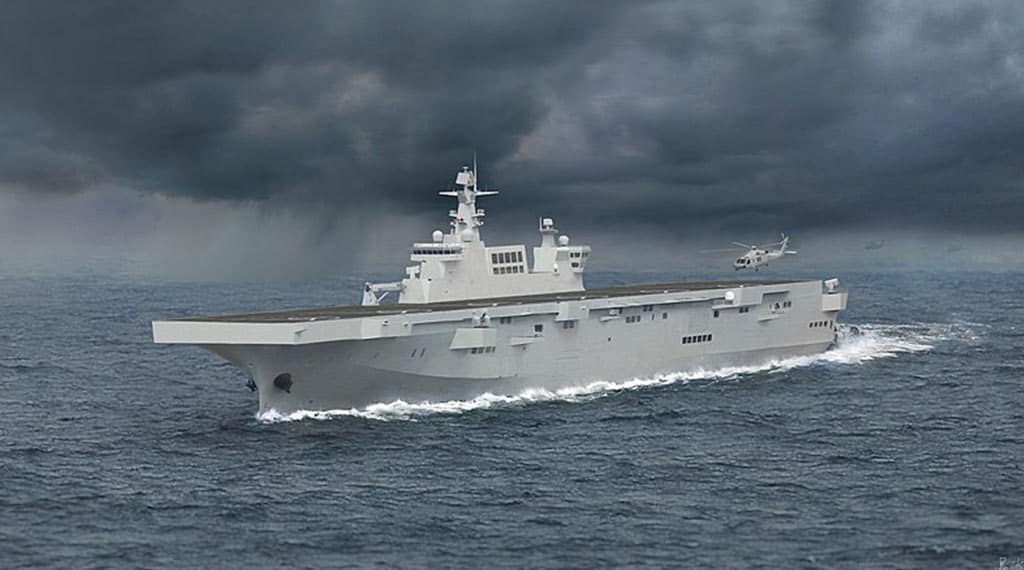Chinese navy launches three warships in one day in muscular propaganda display

On April 23rd, the 72nd anniversary of the People’s Liberation Army Navy (PLAN), China launched three major warships simultaneously at the naval base in Sanya, Hainan Island. They were:
- Hainan – a Type 075 Landing Helicopter Dock
- Dalian – a Type 055 Destroyer
- Long March – a Type 094 Submarine
Chinese President Xi Jinping was present for a choreographed review of the proceedings, and certainly the launch of three ships on an auspicious day was meant largely for propaganda purposes. However, these ships represent a real boost to Chinese naval power in the Western Pacific and are representative of multiple security challenges facing the U.S. Navy as the PLAN rapidly increases the quantity and quality of its production.
Video: 玉麒麟 (Chinese State TV) “Chinese Premier Xi Jinping oversees elaborate commissioning event for three navy ships in Hainan”
The Type 075 Landing Helicopter Deck is an amphibious assault ship that would boost the PLAN’s ability to bring “vertical” capacity to assaulting Taiwan’s mountainous east coast. China has launched three Type 075’s with one being built about every six months.

Photo: Type 075 – 星海军事 / Wikimedia Commons
The Dalian is the second Type 055 Destroyer commissioned by the PLAN in just two months and it is the largest surface combatant currently being built in the world. There are now eight Type 055’s in the water with the first having been launched in 2017.

Photo: Type 055 – 星海军事 / Wikimedia Commons
The Long March is the sixth or seventh Type 094 nuclear-powered submarine in service. It is capable of fielding 12 long range nuclear-tipped ballistic missiles and is an essential part of China’s nuclear triad.
Multiple outlets in the fall of 2020 noted that the PLAN had superseded the U.S. Navy in number of ships, though analysts pointed out that many of those Chinese ships were of a small and coastal type and that the U.S. Navy was bolstered by multiple allied navies in the region.
Still, the explosive growth of Chinese shipbuilding is alarming. In 2019, China had a 335-ship fleet reflecting 55% growth since 2005. Meanwhile, the U.S. had 293 ships in 2019 reflecting an increase of just two ships in those fifteen years.
This month, Joe Biden’s first defense budget proposal kept expenditures essentially flat. Congressional Republicans warn that more investment is required for the U.S. to keep its edge.
“They [China] are spending to surpass the United States, and I’m afraid their doctrine will be to ‘dominate through strength,'” said Rep. Mike Rogers, the top Republican on the House Armed Services Committee, in March.
“We will not allow China to become our peer military,” he added. “The problem with decreased or flat defense budgets is that our adversaries aren’t looking at cutting defense spending. It’s the opposite.”
- Nearly half say coronavirus is man-made; 29% say it was intentionally released - February 17, 2022
- Americans back total boycott of Beijing Olympics under certain conditions - December 13, 2021
- Beijing pushes limits of authoritarian reach with latest celebrity “disappearance” - November 19, 2021
